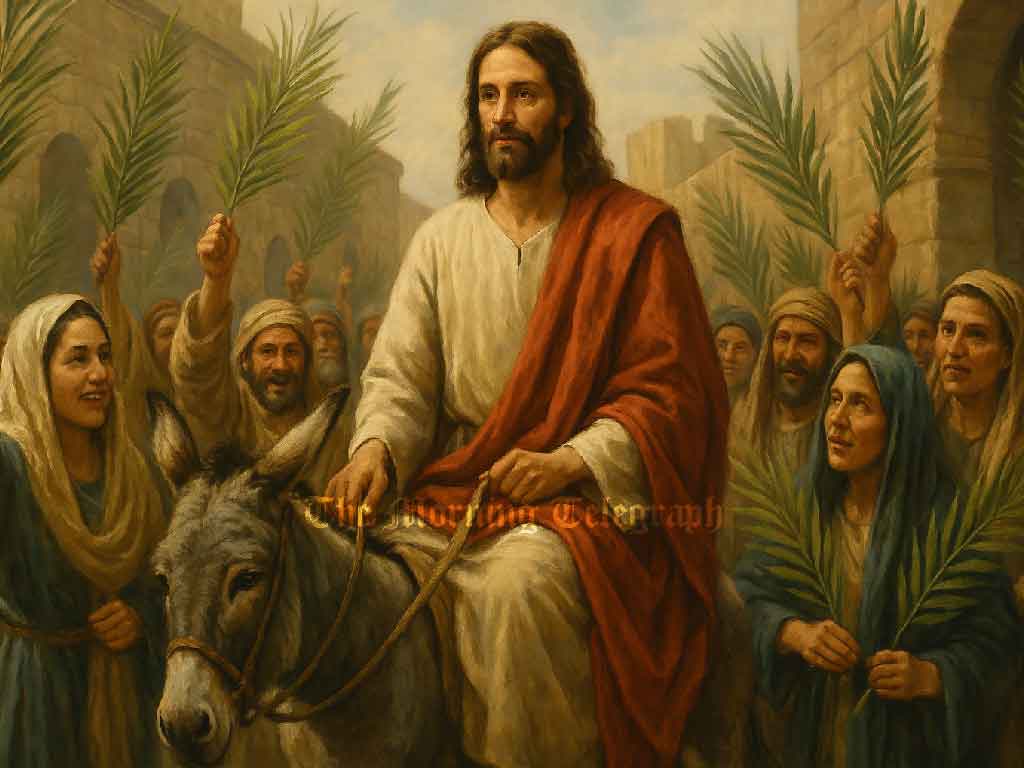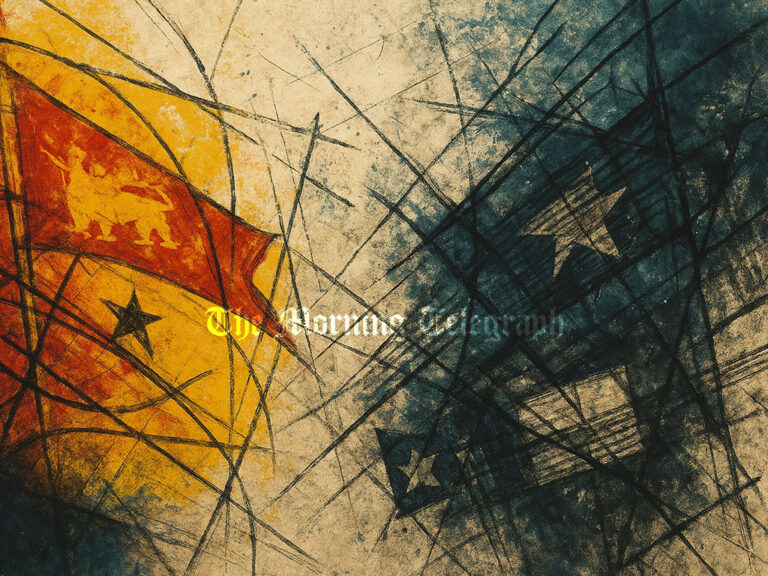
By Marlon Dale Ferreira
Los Angeles – (April 13, 2025) – Christians around the globe commemorated Palm Sunday this weekend, marking not only the triumphal entry of Jesus Christ into Jerusalem but also recognizing a profound theological moment in the grand narrative of the Christian faith: the cycle of creation, fall, redemption, and salvation.
For theologians and believers alike, Palm Sunday is more than a ceremonial reenactment of Jesus riding on a donkey amid cries of “Hosanna”; it is a deeply symbolic event that anchors the climax of God’s salvific plan for humanity.
The Completion of a Divine Cycle
From a biblical perspective, the human story begins with creation in Genesis. God made the world and humanity in perfection, forming a relationship marked by divine intimacy and harmony. However, this was disrupted by the fall, the disobedience of Adam and Eve, which ushered in sin, suffering, and separation from God.
Palm Sunday, which ushers in Holy Week, marks the moment where the redemptive phase of this divine cycle approaches its crescendo. By entering Jerusalem, Jesus the incarnate Son of God steps into the final chapter of His earthly ministry, fully aware that the cross lies ahead. His entry is both a fulfillment of prophecy and a declaration of the kingdom of God breaking into human history.
“Palm Sunday is not merely a prelude to the cross it is a profound moment where heaven begins to touch earth in the most radical way. It encapsulates God’s redemptive plan unfolding in real time.”
The Triumph that Foreshadows Sacrifice
Riding on a donkey, Jesus fulfills the prophecy of Zechariah 9:9, portraying a king who comes in peace rather than power. The crowd’s chants of “Hosanna” (meaning “Save us now”) reveal a longing for deliverance, though many misunderstood the nature of Jesus’ mission. They anticipated a political revolution; instead, Jesus came to defeat sin and death, not Rome.
This act signals the movement from redemption to salvation. Jesus’ death and resurrection just days away from Palm Sunday would serve as the means by which God reconciles humanity back to Himself, restoring what was lost in Eden.
“Palm Sunday reveals the heartbeat of God, His relentless pursuit to redeem His creation. It shows us that redemption is not accidental, but intentionally orchestrated.”
A Call to Respond and Reflect
Churches around the world celebrated Palm Sunday with processions, the waving of palm branches, and readings from Matthew 21, Mark 11, Luke 19, and John 12, reflecting the four Gospel accounts of the event.
However, beyond the pageantry lies a deeper invitation: to journey with Christ through the week ahead, contemplating the mystery of divine love that willingly embraced the cross for the sake of humanity.
Palm Sunday is also a foretaste of the final stage of the Christian narrative restoration and eternal salvation. As echoed in Revelation 7:9, multitudes from every nation will one day wave palm branches again before the throne of the risen Christ, this time in eternal praise.
“What began in a garden and was broken by sin is now being healed by the blood of the Lamb. Palm Sunday tells us that God’s plan is not incomplete. It is perfect, and it is nearing fulfillment.”
As believers continue their Lenten journey into Maundy Thursday, Good Friday, and ultimately Easter Sunday, Palm Sunday serves as the theological gateway that connects the dust of Eden to the glory of resurrection.
- The author is currently following a Masters in (Sacred) Theology in Los Angeles, California




